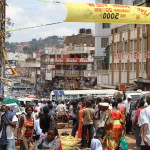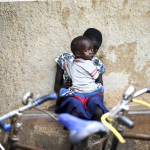The Barclays Africa Group Financial Markets Index launched yesterday at the World Bank Group in Washington DC shows Uganda is among the top ten in Africa in displaying openness for capital markets transactions and direct investment.
The Index found that South Africa, Mauritius and Botswana are Africa’s leading countries in capital markets transactions openness, respectively.
Uganda, ranked in tenth position, comes after Namibia, Kenya (5th), Nigeria, Ghana, Rwanda (8th) and Zambia (9th), but performed better than Tanzania (11th), Morocco, Ivory Coast, Egypt, Mozambique, Seychelles and Ethiopia.
In the East Africa Community (EAC) grouping, the ranking of the financial markets saw Kenya and Rwanda come ahead of Uganda respectively. Tanzania came behind Uganda while Burundi and South Sudan- the other members of the EAC were not considered for this Index.
The Index established that in the EAC Uganda has good foreign exchange access but low local investor capacity. Kenya, on the other hand has strong contract enforcement but over-cautious regulators, while Rwanda displays high transparency and adherence to standard master agreements. Tanzania has a relatively high market transparency hindered by capital restrictions, while Kenya has the most developed financial market.
Uganda’s financial markets operate on the Uganda Securities Exchange (USE) platform which has 17 companies listed to trade shares. USE, a public limited company, is regulated by the Capital Markets Authority (CMA), whose role among others is to ensure that players on the USE exhibit transparency.
The survey held interviews with 60 top executives from 40 financial institutions operating across the 17 countries, including banks, investors, securities exchanges, regulators, audit and accounting firms, and international financial and development institutions.
The authors of the index say the countries surveyed have performed better than the African average, with GDP growth of 3.8% in 2016 against 2.4% for the continent as a whole. “They have, however, experienced a larger absolute fall since 2013, when growth was 6% overall, against the African average of 4.2%,” they say.
The Index produced by Official Monetary and Financial Institutions Forum (OMFIF) and sponsored by Barclays Africa Group, focuses on six fundamental pillars: Market depth, access to foreign exchange, market transparency and regulation, capacity of local investors, underlying macro opportunities, and the enforceability of international financial agreements.
The report says Africa’s large and dynamic market presents opportunities for growth on the continent. However, it says foreign investment prospects are hampered by underdeveloped financial markets and a lack of legal and regulatory clarity.
“Liquidity, regulation, foreign exchange restrictions and policy choices are the highest area of concern for investors when considering Africa. Whereas product diversity and the speed of transactions are among the highest-performing indicators, the report highlights investor concern about the relevance of African markets on the global financial scene,” it says.
OMFIF focuses on global policy and investment themes –particularly in asset management, capital markets and financial supervision/regulation – relating to central banks, sovereign funds, pension funds, regulators and treasuries. It promotes higher standards, performance-enhancing exchanges between public and private sectors and a better understanding of the world economy, in an atmosphere of mutual trust.








